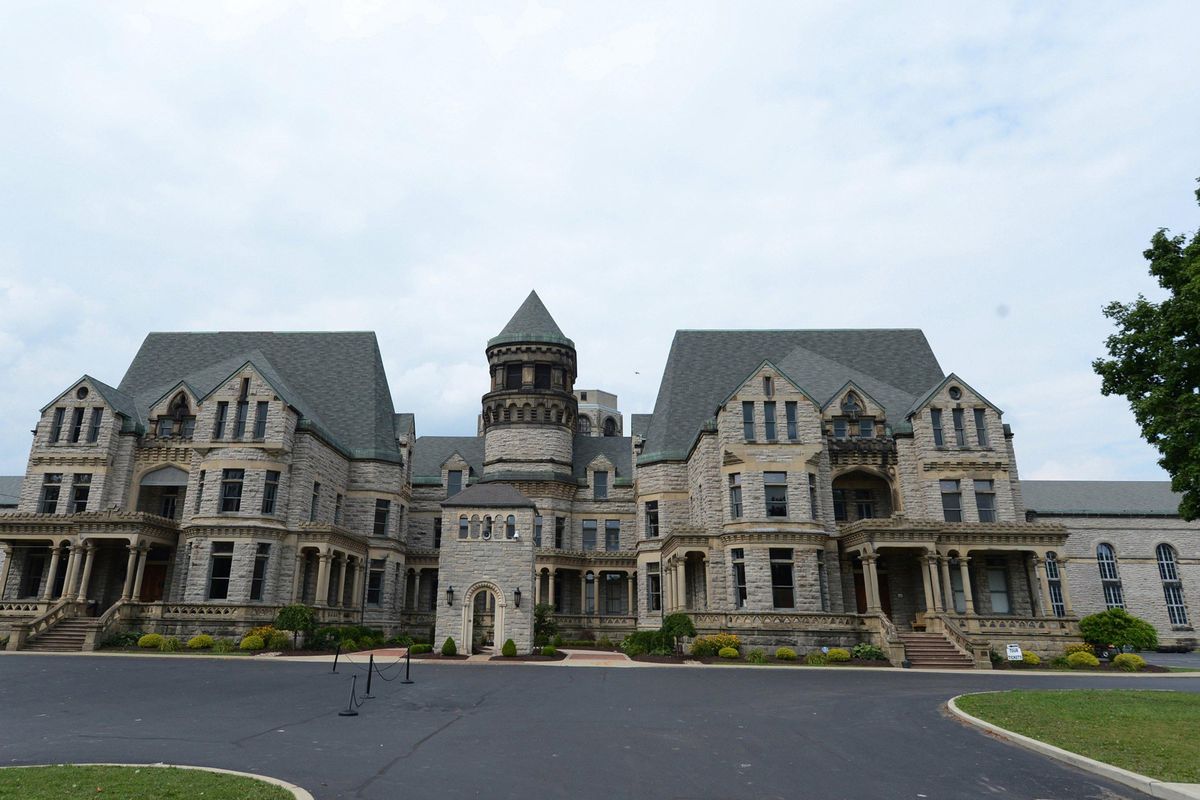‘American Idol’ winner plans concert at prison where ‘Shawshank Redemption’ was filmed

A heavy sadness hovers over the former Ohio State Reformatory in Mansfield, Ohio, where prisoners were crammed into tiny cells amid the metal-on-metal mesh of containment and collected sweat, and where you can re-enact the chilling echo from the chakunnnggg of the door slamming shut in solitary confinement, leaving only disorienting darkness.
The building is massive, ominous, haunting.
It also provides a fascinating glimpse into a piece of Ohio’s past, and what the prison has become since it was shut down in 1990: a movie set and museum.
Best known as the setting for “The Shawshank Redemption,” the sterling 1994 prison drama starring Tim Robbins and Morgan Freeman, the reformatory welcomes thousands of visitors annually not only for Shawshank tours, but also for paranormal ghost walks, vintage baseball games, Halloween haunts and educational excursions.
In addition to several movies – “Air Force One,” “Tango & Cash” – it has served as the backdrop for a number of music videos, from Lil’ Wayne’s “Go DJ” to Anti-Flag’s “This is the New Sound.”
“American Idol” Season 9 winner Lee DeWyze performed “Paranoia” in the prison’s chapel for a Facebook Live session in April. He liked the acoustics so much that he is coming back for a concert. On Aug. 27, the reformatory will host “Lee DeWyze Live from Shawshank,” an all-acoustic set from the enormous chapel, peeling plaster, cracked walls and all.
The OSR is definitely worth a visit. The building itself, a Victorian/Gothic stunner supposedly modeled after a French chateau, is more than 250,000 square feet. The original architect was Levi Scofield, whose Ohio legacy includes the Soldiers’ and Sailors’ Monument in Cleveland’s Public Square and the Lunatic Asylum in Athens.
Opened in 1896 as a reformatory for wayward souls in their teens and 20s, inmates were required to do three things: finish school, go to church and learn a trade. By the 1960s, the reformatory became more crowded, taking in serious criminals. It officially became a maximum security prison in 1976, holding about 1,900 inmates in the East and West Cell Blocks, separated by a guard’s command station. (Mansfield’s incarceration history continues nearby with the Richland Correctional Institution and the Mansfield Correctional Institution, both opened in the 1990s.)
The cells, especially on the East Side, are stiflingly small, with two beds stacked, a sink and toilet. It is hard to imagine one man navigating such a small space, let alone two.
The steel-constructed East Side is also unique: At six stories, it is the largest freestanding cellblock in the world. Self-guided and guided tours primarily run from April 1 through Labor Day. For authenticity, one of the weekend tours is led by a former inmate, Mike Humphrey.
A team at the reformatory is in the process of converting and restoring some former administrative offices into a new, expanded Ohio Corrections Museum. Brick walls and brick ceilings frame hardwood floors, meticulous woodwork and thick, curved windows. The museum will include artifacts from Mansfield and other prisons in Columbus and Lucasville.
Chief among them: Ohio’s electric chair.
Between 1897 and 1963, it was used to execute 315 convicts (312 men and three women). When it was introduced, the chair was considered more humane than the previous method: public hangings.
“Two jolts of 2,000 volts each,” said Bill Sample, head of the restoration project. “After the second jolt, their head was smoking.”
The “Old Sparky” display also includes a control panel replica, the mask worn by prisoners and a vintage telephone, presumably for receiving last-minute reprieves from the governor.
Sample once visited a relative at the Mansfield facility in the 1970s.
“It was nasty,” he said. “Not a nice place to be.”